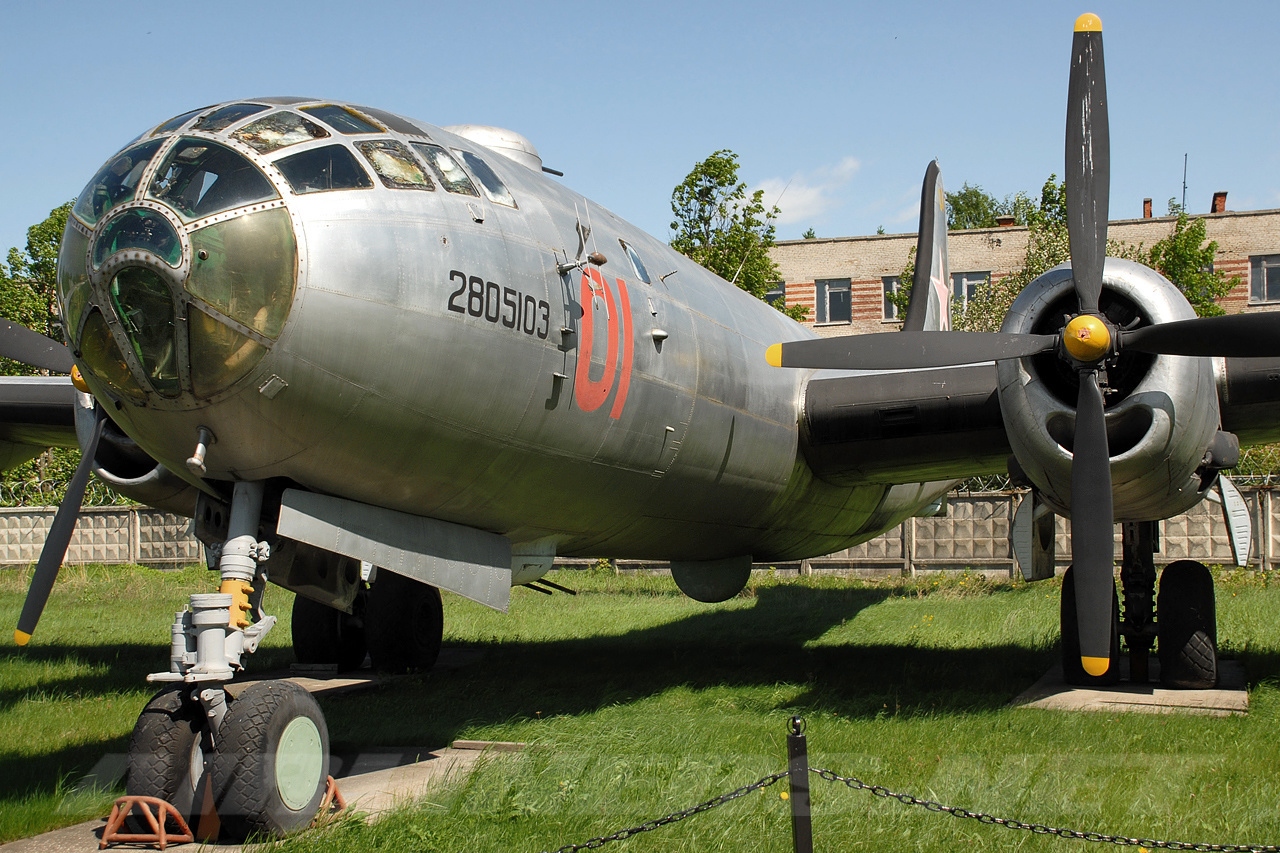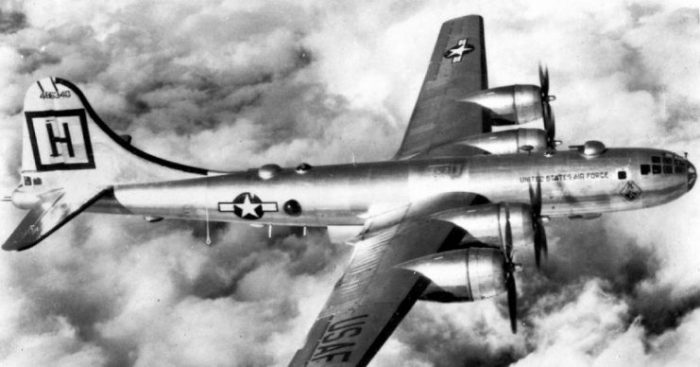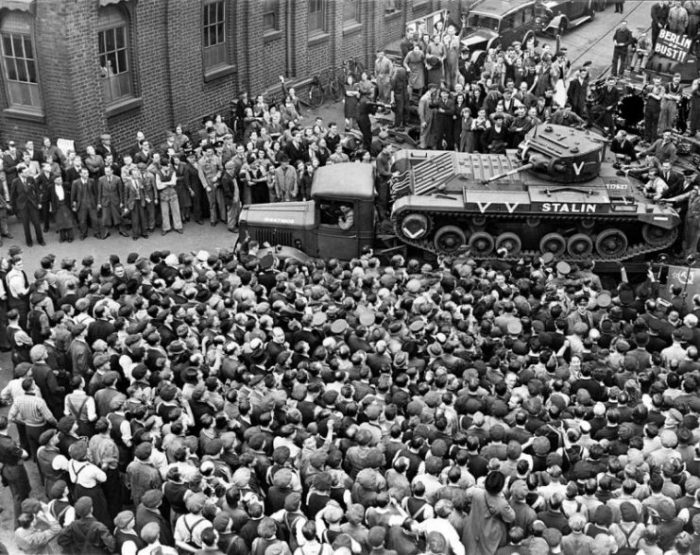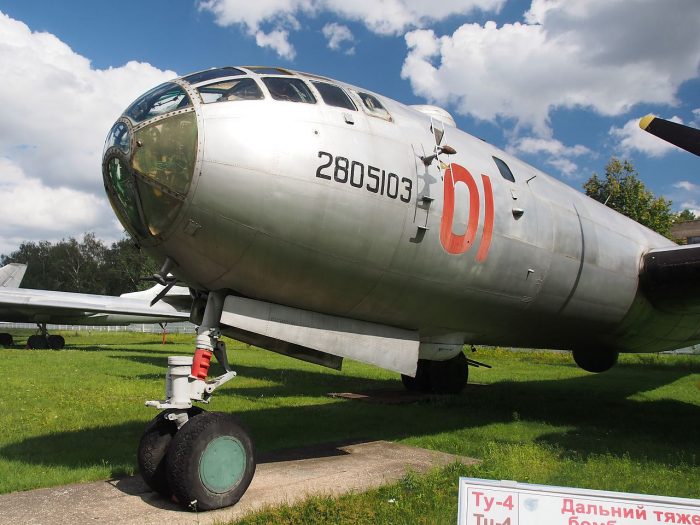The US Air Force B-29 Origins of the Russian Tupolev TU-4

The Tupolev Tu-4 technically originate to the decade before WWII, which was a time of extraordinary aeronautical design development for the US military. The B-17 Flying Fortress and the B-24 Liberator both played a key role in the Battle for Europe, but a bigger, better, longer range bomber, the Boeing B-29 Superfortress was on its way.
The new bomber’s design was developed through 1939 and the first iteration of the new plane took to the skies at the end of 1942. Orders had been placed while the aircraft was still in development with the USAF strategy chiefs expecting to use the long-range capability to bomb targets on the Japanese mainland from forward posts in the Pacific.

In the period between WWI and WWII the fledgling Soviet USSR had also tried to develop its own air fighting capability, but its strategic bomber fleet was dated. On the ground the Russians were unrivalled in terms of tank technology and other heavy weapons, however, their command of the skies was limited. Josef Stalin looked to the West and realised that what the USSR lacked was the expertise to rival the USA.
Strained relations between the USSR and Allied forces took a turn for the better when the non-aggression pact signed by both Hitler and Stalin was reneged upon by the Axis regime in June 1941. Hitler’s invasion of Russia, Operation Barbarossa, sent shockwaves through the region and spurred the USSR to request military aid from both the UK and USA.

The US Air force was happy to send the Russians their Bell P-39 Airacobra fighter planes, which were widely disliked by American pilots. By comparison the Soviet Air Force ended up recording the highest number of kills attributed to any USAF fighter plane, in any conflict.
What did not go the Soviet’s way was a request for delivery of the American’s strategic long-range bomber, the B-29 Superfortress. The Russians had nothing like it in their fleet. The B-29 was an entirely new generation of aircraft.
By the end of the War in Europe, Stalin’s Soviet military machine had bulldozed Germany into submission and an uneasy accord remained between the Russians and the Allies, neither quite trusting the other side, making fertile ground for the coming cold war. In the Eastern regions of the Soviet Union, in Manchuria and other Northern areas, the Soviets had been able to capture five B-29s.
These planes had either crash-landed or otherwise made emergency landings due to poor weather, lack of fuel or for other reasons after completing their bombing missions on Japanese targets throughout Japan, China and other Western Pacific targets. The crews were captured and sent back to the USA, but the aircraft remained in the USSR, where engineers pored over them, taking them to pieces and attempting to remake the aircraft.

Joseph Stalin demanded the aircraft be an exact clone with almost no exceptions, and the entire project was subject to much bureaucratic involvement. The orders from Stalin were wisely taken extremely seriously, which meant mountains had to be moved to be as close a copy as physically possible. This included solving the issue of using the metric measuring system instead of imperial in the US, causing the measuring of the aircraft to greatly complicated.
Materials had to be brought into production that didn’t exist at that time in the USSR, and many Soviet design principles were bypassed to maintain identicality. Permission was required from high ranking officials just to use Soviet made parachutes. It was a titanic task, and it took a team of engineers until 1947 to get a fully Soviet version up in the air.

The aircraft was named the Tu-4, and the DNA of the aircraft was absolutely clear to international observers. The fuselage was identical to the B-29, the wingspan had not changed at all. The ceiling of the aircraft was higher than the B-29 because the Tu-4 was built using more aluminium than its American cousin.
It was an exact identical copy of the B-29, under strict orders from Stalin to copy the aircraft down the the last rivet.
Another Article From Us: Red Stone Commemorates Veteran Red Army Pilots Who Trained in Scotland
The Soviets built almost eight-hundred and fifty Tu-4 aircraft over the next five years, cementing the USSR air force’s strategic bomber capability, adding air-to-air missiles and, in 1949, a nuclear payload. This worried the American government who realised the Tu-4 could, theoretically fly a one-way mission to drop bombs on Los Angeles or Chicago, and so they instigated air combat practice to defend against such a threat.
